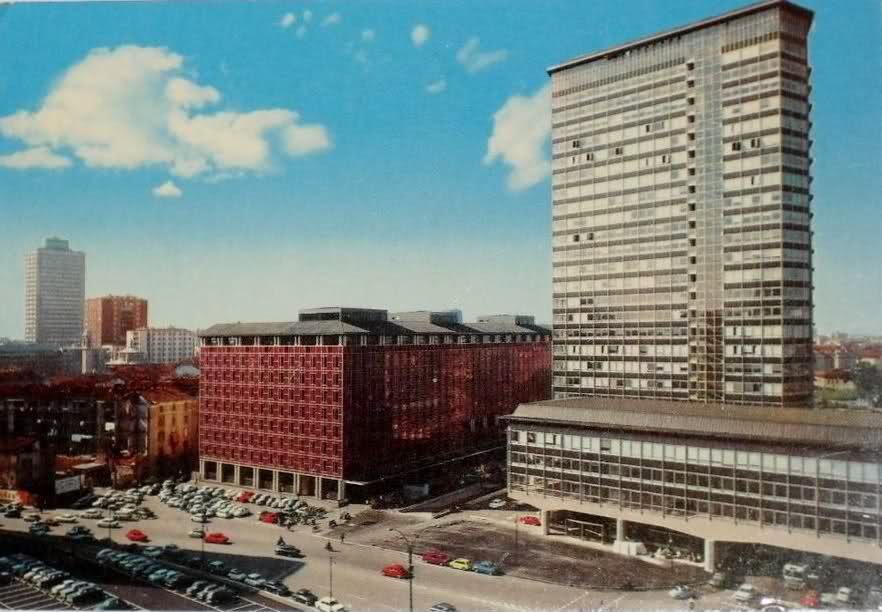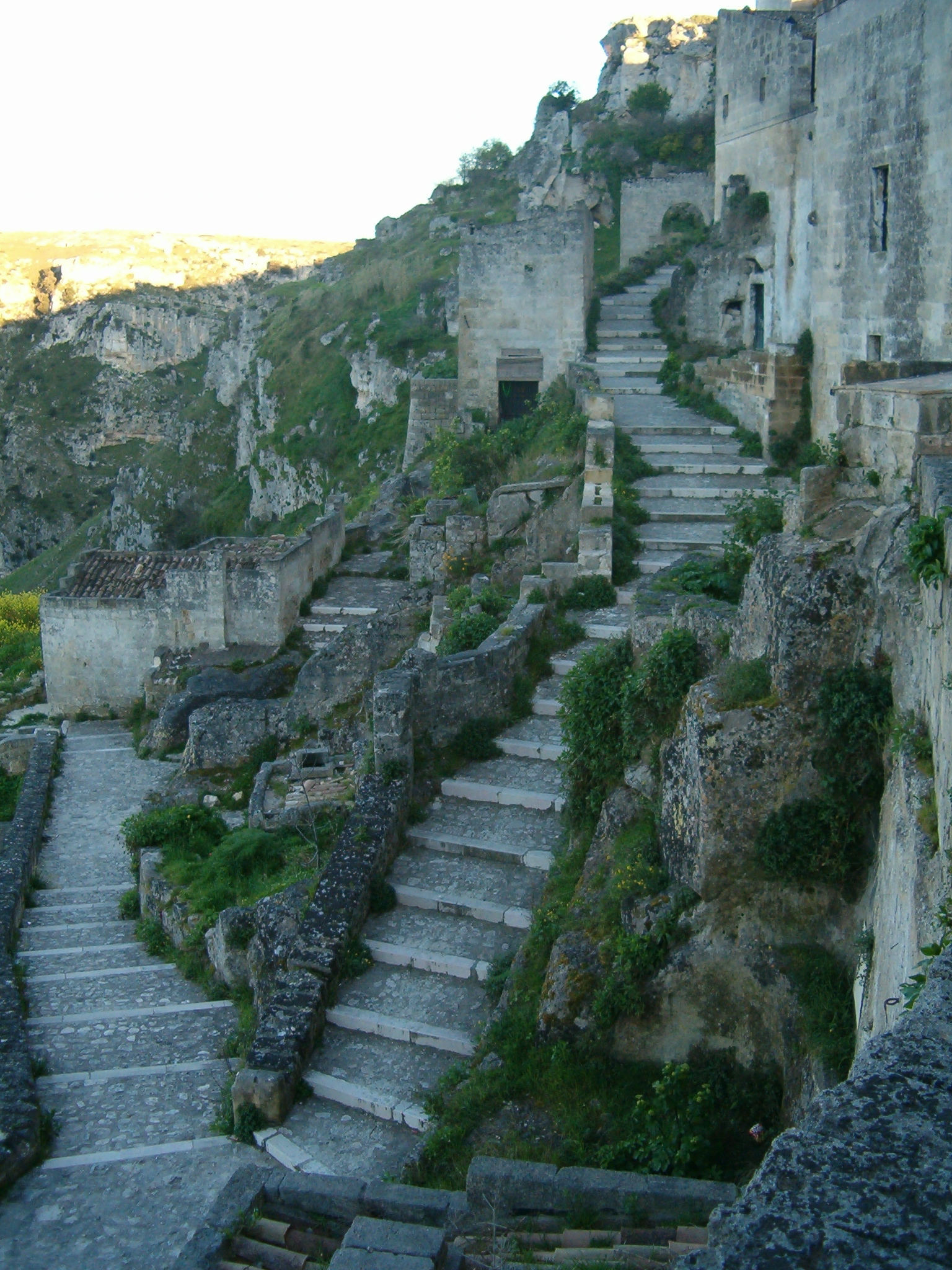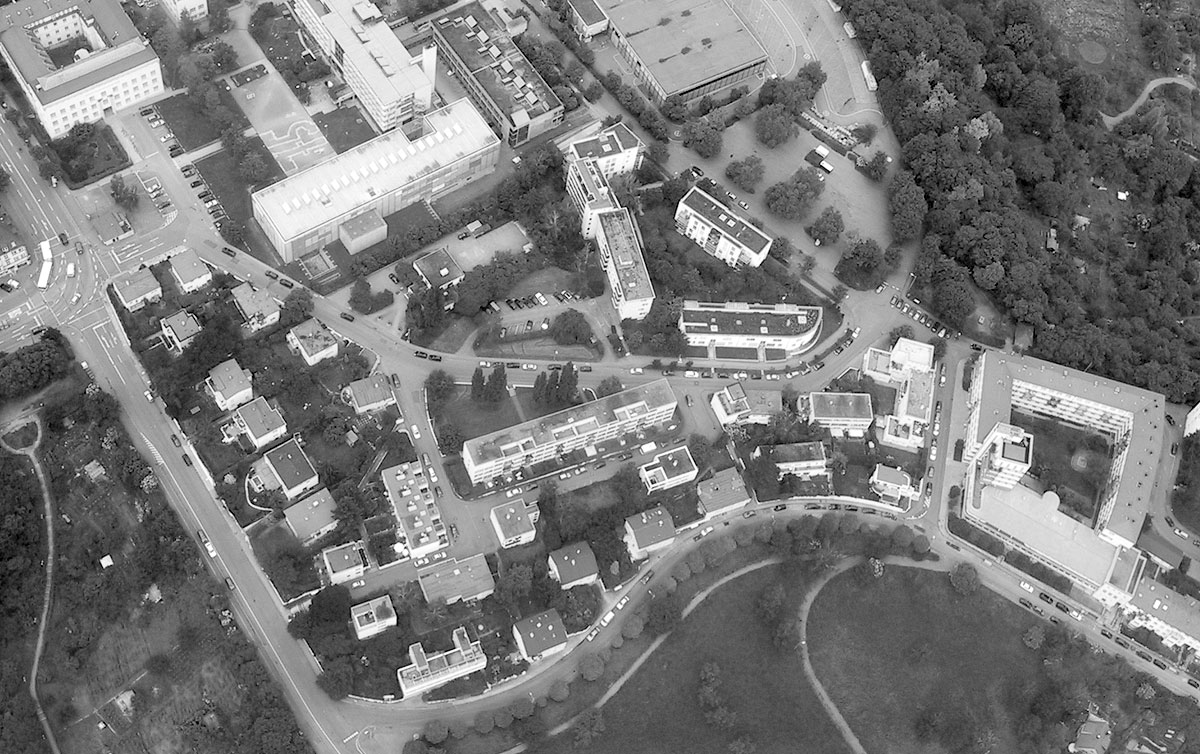|
Giancarlo De Carlo
Giancarlo De Carlo (12 December 1919 − 4 June 2005) was an Italian architect. Biography Giancarlo De Carlo was born in Genoa, Liguria, in 1919. In 1939, he enrolled at the Milan Polytechnic, where he graduated in engineering in 1943. During the Second World War (WWII), he was enlisted as a naval officer. Following the armistice of 8 September 1943, he went into hiding, taking part in the Italian Resistance with the ''Movement of Proletarian Unity'' in which other Milanese architects such as Franco Albini also participated. Later, De Carlo organized an anarchist-libertarian partisan group in Milan (the Matteotti Brigades), together with Giuseppe Pagano. At the end of the war, De Carlo publicized Le Corbusier in Milan and joined the anarchist movement, eventually participating in the first congress of the International of Anarchist Federations in Carrara. In this period, he began his collaboration with the anarchist magazine ''Volontà'', in which he tried to launch new soci ... [...More Info...] [...Related Items...] OR: [Wikipedia] [Google] [Baidu] |
Giancarlo De Carlo 1950s
Giancarlo is an Italian language, Italian given name meaning "John Charles". It is one of the most common masculine given names in Italy and is often short for "Giovanni Carlo". Notable people with the name include: List A *Giancarlo Agazzi (1933–1995), Italian ice hockey player *Giancarlo Alessandrelli (born 1952), Italian footballer *Giancarlo Alessandrini (born 1950), Italian comic artist *Giancarlo Alvarado (born 1978), Puerto Rican baseball player *Giancarlo Antognoni (born 1954), Italian footballer *Giancarlo Astrua (1927–2010), Italian road bicycle racer B *Giancarlo Bacci (1931–2014), Italian footballer *Giancarlo Badessi (1928–2011), Italian actor *Giancarlo Baghetti (1934–1995), Italian Formula One driver *Giancarlo Bellini (born 1945), Italian road bicycle racer *Giancarlo Berardi (born 1949), Italian comic book writer *Giancarlo Bercellino (born 1941), Italian footballer *Giancarlo Bergamelli (born 1974), Italian alpine skier *Giancarlo Bergamini (1926–2020 ... [...More Info...] [...Related Items...] OR: [Wikipedia] [Google] [Baidu] |
Italian Economic Miracle
The Italian economic miracle or Italian economic boom ( it, il miracolo economico italiano) is the term used by historians, economists, and the mass media to designate the prolonged period of strong economic growth in Italy after the Second World War to the late 1960s, and in particular the years from 1958 to 1963. This phase of Italian history represented not only a cornerstone in the economic and social development of the country—which was transformed from a poor, mainly rural, nation into a global industrial power—but also a period of momentous change in Italian society and culture. As summed up by one historian, by the end of the 1970s, "social security coverage had been made comprehensive and relatively generous. The material standard of living had vastly improved for the great majority of the population." History After the end of World War II, Italy was in ruins and occupied by foreign armies, a condition that worsened the chronic development gap towards the more adva ... [...More Info...] [...Related Items...] OR: [Wikipedia] [Google] [Baidu] |
Le Corbusier
Charles-Édouard Jeanneret (6 October 188727 August 1965), known as Le Corbusier ( , , ), was a Swiss-French architect, designer, painter, urban planner, writer, and one of the pioneers of what is now regarded as modern architecture. He was born in Switzerland and became a French citizen in 1930. His career spanned five decades, and he designed buildings in Europe, Japan, India, and North and South America. Dedicated to providing better living conditions for the residents of crowded cities, Le Corbusier was influential in urban planning, and was a founding member of the (CIAM). Le Corbusier prepared the master plan for the city of Chandigarh in India, and contributed specific designs for several buildings there, especially the government buildings. On 17 July 2016, seventeen projects by Le Corbusier in seven countries were inscribed in the list of UNESCO World Heritage Sites as The Architectural Work of Le Corbusier, The Architectural Work of Le Corbusier, an Outstanding Co ... [...More Info...] [...Related Items...] OR: [Wikipedia] [Google] [Baidu] |
Matera
Matera (, ; Materano: ) is a city in the region of Basilicata, in Southern Italy. As the capital of the province of Matera, its original settlement lies in two canyons carved by the Gravina River. This area, the Sassi di Matera, is a complex of cave dwellings carved into the ancient river canyon. Over the course of its history, Matera has been occupied by Romans, Longobards, Byzantines, Saracens, Swabians, Angevins, Aragonese, and Bourbons. By the late 1800s, Matera's cave dwellings became noted for intractable poverty, poor sanitation, meager working conditions, and rampant disease. Evacuated in 1952, the population was relocated to modern housing, and the Sassi (Italian for "stones") lay abandoned until the 1980s. Renewed vision and investment led to the cave dwellings becoming a noted historic tourism destination, with hotels, small museums and restaurants – and a vibrant arts community. Known as ("the underground city"), the Sassi and the park of the Rupestrian Chur ... [...More Info...] [...Related Items...] OR: [Wikipedia] [Google] [Baidu] |
Congrès Internationaux D'Architecture Moderne
The ''Congrès internationaux d'architecture moderne'' (CIAM), or International Congresses of Modern Architecture, was an organization founded in 1928 and disbanded in 1959, responsible for a series of events and congresses arranged across Europe by the most prominent architects of the time, with the objective of spreading the principles of the Modern Movement focusing in all the main domains of architecture (such as landscape, urbanism, industrial design, and many others). Formation and membership The ''International Congresses of Modern Architecture'' (CIAM) was founded in June 1928, at the Chateau de la Sarraz in Switzerland, by a group of 28 European architects organized by Le Corbusier, Hélène de Mandrot (owner of the castle), and Sigfried Giedion, (the first secretary-general). CIAM was one of many 20th-century manifestos meant to advance the cause of ''architecture as a social art''. Members Other founder members included Karl Moser (first president), Hendrik Berlag ... [...More Info...] [...Related Items...] OR: [Wikipedia] [Google] [Baidu] |
Paolo Portoghesi
Paolo Portoghesi (born 2 November 1931, Rome) is an Italian architect, theorist, historian and professor of architecture at the University La Sapienza in Rome. He is a former president of the architectural section of the Venice Biennale (1979–92), Editor-in-chief of the journal ''Controspazio'' (1969–83), and dean of the Faculty of Architecture at the Politecnico di Milano university (1968–78). __NOTOC__ Portoghesi studied architecture at the Faculty of Architecture at the University of Rome, completing his studies in 1957. He began teaching the history of criticism at the same faculty in 1961. Portoghesi opened an architectural practice with architect-engineer Vittorio Gigliotti (born 1921) in Rome in 1964. He has specialized in teaching and researching Classical architecture, especially Baroque architecture, and in particular Borromini, but also Michelangelo. His interest in more contemporary architecture coincided largely with that of his colleague in Rome, Bruno Zevi, ... [...More Info...] [...Related Items...] OR: [Wikipedia] [Google] [Baidu] |
Bruno Zevi
Bruno Zevi (22 January 1918 – 9 January 2000) was an Italian architect, historian, professor, curator, author, and editor. Zevi was a vocal critic of "classicizing" modern architecture and postmodernism. Early life Zevi was born and died in Rome. His family was Italian Jewish. On finishing school in 1933, he enrolled at the Faculty of Architecture at the University of Rome. Due to the anti-Semitic laws, Zevi was forced in 1938 to abandon his studies, and so left for London, UK, before moving to the United States. Zevi graduated from the Harvard Graduate School of Design, then under the directorship of Walter Gropius. In 1940 he married Italian journalist and writer Tullia Calabi. While in the US he discovered the work of Frank Lloyd Wright, which became one of the bases for his championing of organic architecture. Zevi returned to London in 1943, working as a translator in the war effort. Association for Organic Architecture In 1944, he founded the influential Associat ... [...More Info...] [...Related Items...] OR: [Wikipedia] [Google] [Baidu] |
Carlo Scarpa
Carlo Scarpa (2 June 1906 – 28 November 1978) was an Italian architect, influenced by the materials, landscape and the history of Venetian culture, and by Japan. Scarpa translated his interests in history, regionalism, invention, and the techniques of the artist and craftsman into ingenious glass and furniture design. Biography Scarpa was born in Venice. Much of his early childhood was spent in Vicenza, where his family relocated when he was 2 years old. After his mother's death when he was 13, he moved with his father and brother back to Venice. Carlo attended the Academy of Fine Arts where he focused on architectural studies. Graduated from the Accademia in Venice, with the title of Professor of Architecture, he apprenticed with the architect Francesco Rinaldo. Scarpa married Rinaldo's niece, Nini Lazzari (Onorina Lazzari). However, Scarpa refused to sit the ''pro forma'' professional exam administrated by the Italian Government after World War II. As a consequence, he w ... [...More Info...] [...Related Items...] OR: [Wikipedia] [Google] [Baidu] |
Giuseppe Samonà
Giuseppe Samonà (1898–1983) was an Italian architect and urban planner, whose notable works include the post office in the Appio quarter of Rome (built 1933–6), the Banca d'Italia in Padua (1968) and a theatre in Sciacca, Sicily (1974–9). He also served as director of the Istituto Universitario di Architettura in Venice Venice ( ; it, Venezia ; vec, Venesia or ) is a city in northeastern Italy and the capital of the Veneto region. It is built on a group of 118 small islands that are separated by canals and linked by over 400 bridges. The isla ... from 1945 to 1971. Italian Hispanist and author Carmelo Samonà was his son. References 1898 births 1983 deaths 20th-century Italian architects Italian urban planners {{Italy-architect-stub ... [...More Info...] [...Related Items...] OR: [Wikipedia] [Google] [Baidu] |
Urbanism
Urbanism is the study of how inhabitants of urban areas, such as towns and cities, interact with the built environment. It is a direct component of disciplines such as urban planning, which is the profession focusing on the physical design and management of urban structures and urban sociology which is the academic field the study of urban life and culture. Many architects, planners, geographers, and sociologists investigate the way people live in densely populated urban areas. There is a wide variety of different theories and approaches to the study of urbanism. However, in some contexts internationally, ''urbanism'' is synonymous with urban planning, and ''urbanist'' refers to an urban planner. The term ''urbanism'' originated in the late nineteenth century with the Spanish engineer-architect Ildefons Cerda, whose intent was to create an autonomous activity focused on the spatial organization of the city. Urbanism's emergence in the early 20th century was associated with the ... [...More Info...] [...Related Items...] OR: [Wikipedia] [Google] [Baidu] |
Italian Architecture
Italy has a very broad and diverse architectural style, which cannot be simply classified by period or region, due to Italy's division into various small states until 1861. This has created a highly diverse and eclectic range in architectural designs. Italy is known for its considerable architectural achievements, such as the construction of aqueducts, temples and similar structures during ancient Rome, the founding of the Renaissance architectural movement in the late-14th to 16th century, and being the homeland of Palladianism, a style of construction which inspired movements such as that of Neoclassical architecture, and influenced the designs which noblemen built their country houses all over the world, notably in the United Kingdom, Australia and the United States of America during the late-17th to early 20th centuries. Several of the finest works in Western architecture, such as the Colosseum, the Duomo of Milan, the Mole Antonelliana in Turin, Florence cathedral and the ... [...More Info...] [...Related Items...] OR: [Wikipedia] [Google] [Baidu] |
Urban Planning
Urban planning, also known as town planning, city planning, regional planning, or rural planning, is a technical and political process that is focused on the development and design of land use and the built environment, including air, water, and the infrastructure passing into and out of urban areas, such as transportation, communications, and distribution networks and their accessibility. Traditionally, urban planning followed a top-down approach in master planning the physical layout of human settlements. The primary concern was the public welfare, which included considerations of efficiency, sanitation, protection and use of the environment, as well as effects of the master plans on the social and economic activities. Over time, urban planning has adopted a focus on the social and environmental bottom-lines that focus on planning as a tool to improve the health and well-being of people while maintaining sustainability standards. Sustainable development was added as one of th ... [...More Info...] [...Related Items...] OR: [Wikipedia] [Google] [Baidu] |









